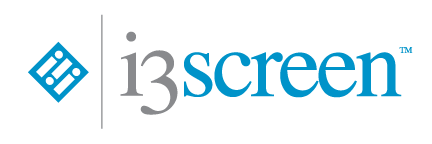
By Ryan West, MS, CFI, Director of Corporate Training, ARCpoint Labs
It is widely known and accepted by industry experts that a comprehensive drug-testing program helps to keep a company, its employees, and its customers safe. Several of the known benefits include the deterrence of substance misuse on and off company property, which reduces the likelihood of employee impairment during work hours. This in turn reduces employee accidents, equipment damage, tardiness, absenteeism, presenteeism, turnover, theft, healthcare costs, and customer service complaints, while maintaining staff morale and productivity, and safeguarding the employer against costly lawsuits. What is less promoted, and therefore less acknowledged, is the role of the workplace drug test in saving lives.
Drug Testing as a Prevention Tool
The most recent publication from the National Survey on Drug Use and Health estimates that in 2020, among the approximately 277 million Americans 18 years of age and older: exactly 50 percent (138.5 million) consumed some level of alcohol in the past month, 21.9 percent (60.6 million) were binge alcohol users in the past month, 6.3 percent (17.6 million) were heavy alcohol users in the past month, and 10.0 percent (27.6 million) had Alcohol Use Disorder (the specific equivalent to “alcoholism” or “alcohol addiction”).
Regarding illicit substance use among American adults, 20.2 percent (55.9 million) used an illicit drug in the past year at least one time, and of these individuals, 30.8 percent (17.2 million) had substance use disorder (the general equivalent to “chemical addiction”)1. When alcohol and illicit drug use are combined, 8.3 percent (20.9 million) of American adults had a substance use disorder in 20201. Approximately 70 percent of these individuals are in the workforce 2. That is roughly 14.6 million Americans who are showing up to work, Monday through Sunday, statistically less safe and less productive than their non-substance misusing colleagues.
Employees with a substance use disorder are also more likely to have difficulty adhering to a Drug-Free Workplace policy, and thus more likely to seek employment at companies that either do not have a policy or do not enforce the one they have. These companies become the target and employer-of-choice for the illicit drug user and/or heavy drinker because they can continue to engage in their substance misuse while collecting a paycheck, without fear of retaliation or termination.
By conducting pre-employment/post-offer, random, and reasonable suspicion drug testing, an employer is effectively accomplishing two objectives: deterrence and detection. Illicit substance users are less likely to apply for the position, or, more likely to be detected and denied entry into a company, reducing the costs of hiring, on-boarding and turnover. That stated, it is not uncommon for a substance misusing prospect to cease all drug use for a short while to pass the pre-employment or post-offer test. Once the position is acquired, however, their substance use resumes – in many cases immediately. Of course, some employees develop a substance use issue AFTER they are hired by a company. Therefore the Random or Reasonable Suspicion drug test plays a critical role in detection and deterrence.
Drug Testing as an Intervention Tool
There is an interesting phenomenon that occurs when one works in the behavioral health treatment field for any number of years. The practitioner tends to remember all their patients when prompted, but certain patients are remembered without prompting. Their stories, and their timing, impact the practitioner differently. The details of the following story have been altered to protect the confidentiality of the patient. Any similarities found are a matter of coincidence.
It was the Fall of 2013, I was working as a drug and alcohol counselor and clinical evaluator for a regional chemical addictions treatment provider in Pennsylvania, slowly morphing into a community drug and alcohol educator and workplace trainer and consultant. I was writing the treatment plan for my fourth and final patient that day. He was referred for a drug and alcohol evaluation by his human resources department for failing a random drug test at work.
As stated earlier, approximately 70 percent of individuals with a substance use disorder are in the workforce2, but at the treatment facility where I worked, that number was closer to 80 percent. Most were using alcohol, marijuana, opioids, and/or cocaine. Name the substance, we saw it and treated it. This relatively young patient had an affinity for alcohol and pain pills. His daily binge alcohol use, which we commonly referred to as “chemical concussions,” had aged this patient’s appearance. He was in his early 30s but could have easily passed for a person in their mid-40s. He was consuming half of a fifth of vodka and a six-pack of light beer daily (equivalent to about approximately 14 standard drinks), and once or twice per week he would ease up on the liquor and chase illegally obtained pain pills with the beer. Anyone with a basic understanding of pharmacology knows that this dangerous combination is the fast-track to an overdose and early death.
A random drug test at his workplace detected oxycodone metabolites, which led him to my office on a Friday afternoon for a professional drug and alcohol evaluation. He and the referring employer didn’t realize it at the time (nor did his incredibly supportive family), but that random drug test not only prevented a potentially serious safety incident, it also saved this man’s life. Almost eight years to the day he was admitted to detox, I was guest lecturing on “the science of recovery” for an outpatient continuing care group, and in walks this gentleman. A hug, a few laughs, and some teary-eyed memories later, he shared with me the joys of being a husband, a father, and eight years sober.
This story is one anecdote among millions, but hopefully, the point is well-received. If you remember only one statistic in this article, remember this one: Of the 20.9 million Americans with a substance use disorder in 2020, only 11.9 percent (2.48 million) received some type of treatment, with the majority attending an outpatient rehabilitation program and/or a self-help support group, such as Alcoholics Anonymous1. This statistic does not change much year after year. Most American adults with a chemical addiction are in the workforce, and only one out of 10 seek help for their condition. Employers who choose to forgo drug testing, and instead choose to wait for the substance misusing employee to come knocking on their door pleading for help, are going to be waiting an exceptionally long time.
For so many people who need help for their substance use issue, drug tests also serve as an intervention tool that provides the individual with an opportunity to receive the help they did not ask for, but desperately need. I have seen thousands of patients in my career, the majority of them employed, and know that the value of drug testing goes beyond preventing safety incidents. Employers, who drug test, must also be mindful of this fact: workplace drug tests often mark the beginning of an individual’s journey toward health and wellness. They can and do change lives.
References
- Substance Abuse and Mental Health Services Administration. (2021). Key substance use and mental health indicators in the United States: Results from the 2020 National Survey on Drug Use and Health (HHS Publication No. PEP21-07-01-003, NSDUH Series H-56). Rockville, MD: Center for Behavioral Health Statistics and Quality, Substance Abuse and Mental Health Services Administration. Retrieved from https://www.samhsa.gov/data/
- Center for Behavioral Health Statistics and Quality. (2015). Behavioral health trends in the United States: Results from the 2014 National Survey on Drug Use and Health (HHS Publication No. SMA 15-4927, NSDUH Series H-50). Retrieved from http://www.samhsa.gov/ data/

